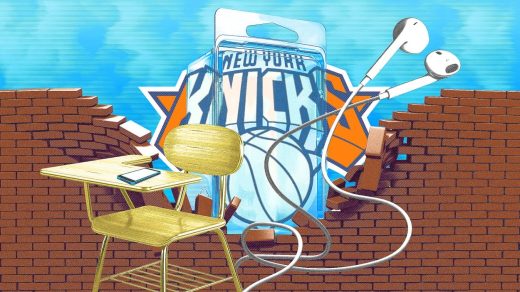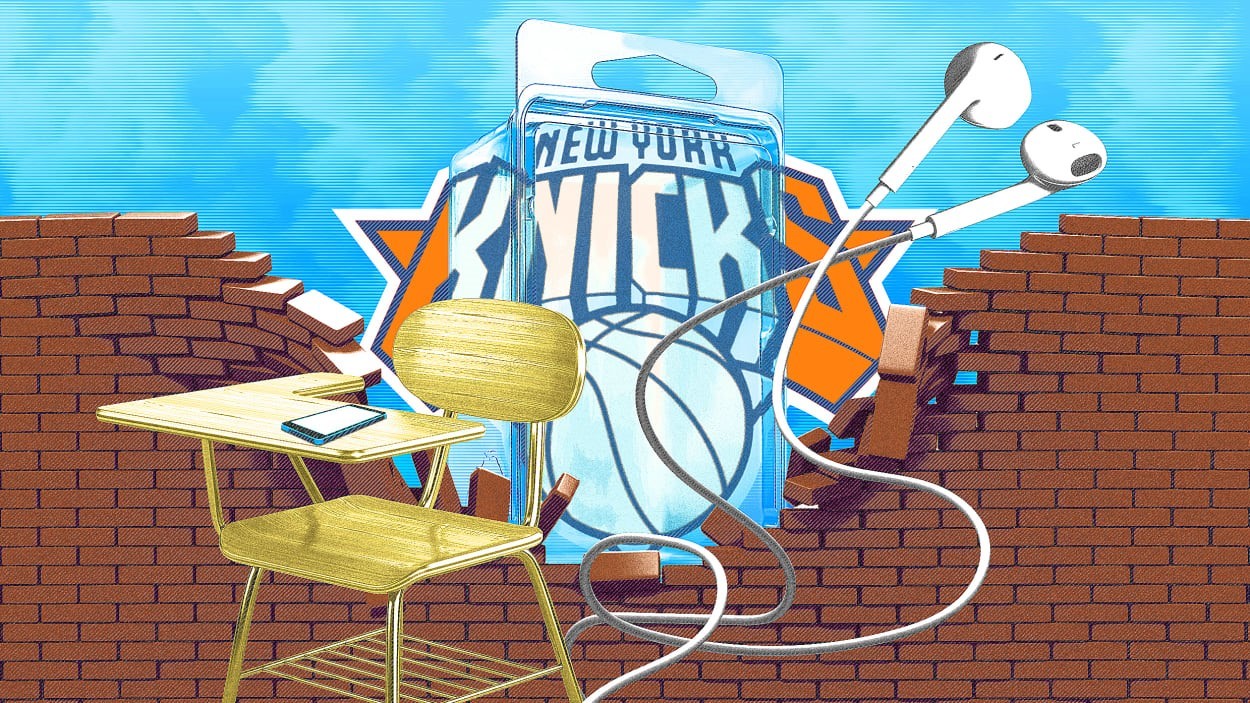5 design leaders on what they *really* wish they could redesign in 2024
When you see a major rebrand, there’s something you’re not seeing: mountains of meetings; gratuitously annotated feedback from entire org charts; waking up in cold sweats over logo variations; and all the rest of the below-the-iceberg happenings that underpin any overhaul.
What has always struck me is that despite the bounds of commissions and the whims of their commissioners, the best creatives working today still manage to turn out some great things at a consistent clip. And so I’ve wondered: What would such designers overhaul if they had a blue sky and a blank slate? From a logo that has always bugged them to the U.S. tax filing process to any system at large, if budget, time, or practicality were no object, what would they redesign?
As we kick off the new year, we asked five innovative creative leaders—Abraham Burickson, Alex Center, Pum Lefebure, Debbie Millman, and Forest Young—to find out.
Forest Young, founder & lead design officer, Young Studio
A “redesign” so urgent that it could be framed as a quiet plague is the blister pack. A blister pack is a catchall term for a pocket made from a thermoformed plastic, often with a paperboard backing or a lidding seal of aluminum foil or plastic, that is the delivery vessel for millions of toys, tools, and medication. The “clamshell” is the ouroboros of blister packs, where the plastic folds into itself; cue up men’s razors and oil-absorbing sheets. It is at once a technological marvel and a curse.
Blisters are as common as doorknobs, an indictment of our pervasive consumerism, and a design that has inspired a unique unboxing behavior—wrap rage. Here, the object of desire is presented in a perfectly bespoke clear container. Like a theatrical set, there is the “thrust” blister (e.g., action figures) or a “box” blister akin to a window display. These seductive coffins are responsible for an undue amount of lacerations and ER visits as the compounding effects of desire and impatience lead many unboxers to acquire impromptu assistive tools—a pair of scissors, a kitchen knife, even teeth to free the object from its trappings; a pound of flesh for instant gratification.
The design straddles a unique and challenging Venn diagram of accelerating a purchase, protecting the consumer good, and preventing would-be shoplifting. Perhaps the blister is merely a mirror of a greater symptom that requires a human rewiring as much as an industrial design consideration.
Alex Center, founder, CENTER
As a proud native New Yorker, I might get myself in hot water with this, but I’ve always dreamed of redesigning my favorite NBA team, the New York Knicks.
*Ducks as Timberlands come flying my way*
While the current logo has undeniable nostalgia, if you take a closer look, its design flaws become more apparent. It feels trapped in the ’90s, and not in a hip trendy way, but more like an outdated TV cartoon. The logo’s complexity doesn’t translate well to smaller formats and doesn’t even look great on most merchandise. It’s also worth noting that in the 30 years since its introduction, the Knicks have won a total of zero championships.
Beyond the logo, the team’s broader branding could also use a facelift. There’s a lack of distinct typography, and the color palette has seen subtle shifts over recent years. Looking around the NBA, franchises like the Milwaukee Bucks and Utah Jazz have revamped their identities successfully, merging contemporary design with a nod to their team’s history, tradition, and city. I believe this can be done for the Knicks.
It’s a monumental challenge, but one New York deserves. While I can’t promise it’ll fast-track us to an NBA title, it’s a step in the right direction.
Call me, James Dolan. We can redo the Sphere branding next!
Pum Lefebure, cofounder and chief creative officer, Design Army
As a mom of a teenager, I would love to redesign something that places kids as the top priority and makes a societal impact—like updating our educational system. It hasn’t kept up with our ever-changing world, or the digital space’s current underlying issues. Be it TikTok, Instagram, or any platform beyond, the internet puts the power to create, inspire—and deeply hurt humans—in the hands of today’s youth. For many, there’s a huge disconnect between what they post online and the real-life impact on others, themselves, and their futures. Combined with adolescent angst and the pervasive push to fit in, it’s no wonder anxiety and depression are rampant among teens. Rather than preventing kids from using social media, we must prepare them to be responsible consumers and creators of content.
I would make “Personal Branding” a requisite in school—as important as sex education.
Using design principles, I would teach kids that “brand” means being true to yourself. And that self-worth goes far beyond social media. The homework? Brand you. Kids would learn the tremendous power of words and images, and the responsibility required to use all this wonderful technology. I would teach them to take full accountability for their digital space and how it can crucially boost or diminish their reputation—just like a corporate brand. From discovering and embracing their uniqueness to authentically expressing their “brand” story visually and verbally, kids would learn to design their life to achieve their dreams—and ultimately, be the best version of themselves.
As we move forward in 2024 with AI and other new technologies, let’s make sure we’re always humans first. Technology is only as good as the good it does for people.
Debbie Millman, host of Design Matters; chair, masters in branding, School of Visual Arts
There are so many things I want to be redesigned in 2024. Here are some, from the ridiculous to the sublime.
On the somewhat easy side, I would ask that all earbuds do not leak any audio—I don’t want to hear a peep of anything anyone is listening to. Also, all television commercials must adhere to the Commercial Advertisement Loudness Mitigation Act, and televisions should be designed to prevent any involuntary increases.
On the harder side of the spectrum, I would say that Broadway Theater seats need to be redesigned; paying $300+ for a ticket should entitle people to a seat somewhat larger than an economy seat on an airplane.
I would also suggest that bus shelters be redesigned, so that all seating is fully accessible, without bars or barriers.
And finally, and most importantly, the map of the world must be redesigned. Our borders are human constructs. They wouldn’t exist without us and they are arbitrary. There are no man-made “walls” in nature. Humans need to design a world where we can live in harmony with shared resources, and dignity and justice for all, no matter where we live and call home. And then, while we’re at it, let’s design one global identity signifying our commitment to a safe and sustainable planet.
Abraham Burickson, author, Experience Design; cofounder, Odyssey Works
You may have noticed that we’re facing some major global problems right now. We are also, apparently, facing the end of the era of design thinking. As layoffs rage like wildfires through Ideo, we should ask: Where might we go from here?
Perhaps we should find a new way to design, one that begins with our biggest issues. Perhaps it is time to stop designing things altogether.
And by things, I don’t just mean physical things; I mean services and all the other stuff a company might consider product.
The emerging field of experience design proposes that designers think of effect before product, of purpose before stuff. We should stop designing energy-efficient lightbulbs and start designing energy-efficient lives. We should stop designing social networking apps and start designing social connection.
Today’s designers are focused almost entirely on making things pretty or on identifying discrete problems and solving them. But experience design asks us to identify the world we wish to create, then work backwards from there. Any building, any app, any graphic, any service can be part of designing a different world. We just need clear goals. And our first project should be the redesign of design itself.
(20)



